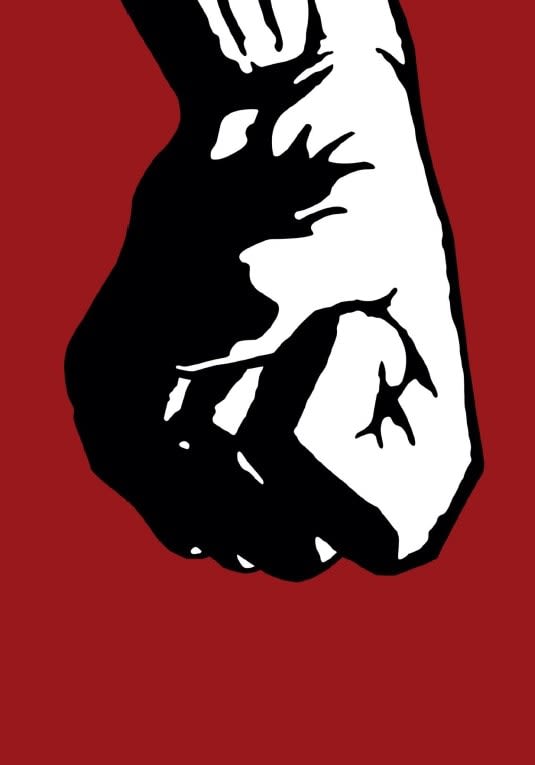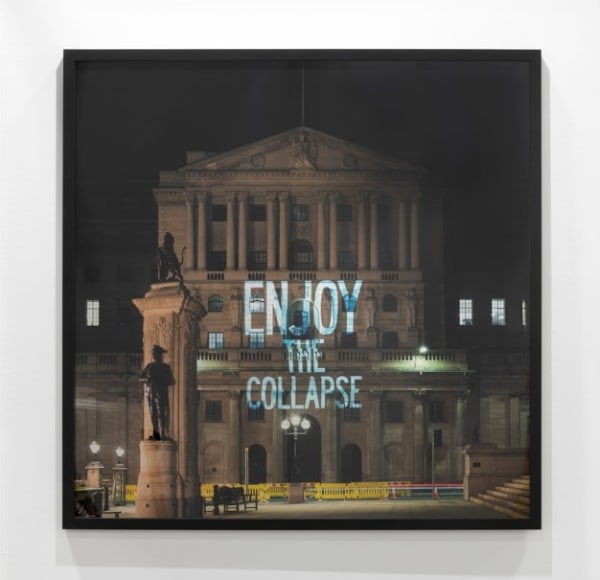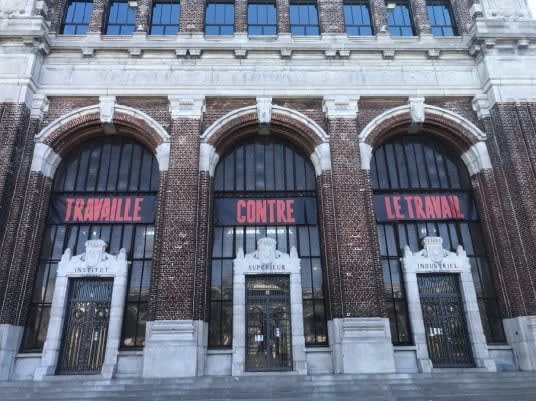TRAVAILLE CONTRE LE TRAVAIL: DEMOCRACIA
The exhibition stems from a reflection on the centrality of labour in the construction of the modern subject and in the unfulfilled promises of progress. Throughout history, theorists and representatives of the working class have imagined emancipation not only as an improvement in working conditions but as the possibility of liberation from work itself. Or rather, from the “productivist mandate” that turns life into a function of the economy. From the socialist and anarchist doctrines of the nineteenth century — from Charles Fourier and William Morris to Karl Marx, Paul Lafargue and Piotr Kropotkin — emerged the idea that freedom did not lie in the right to work, but in its overcoming, in the recovery of time and desire as territories of autonomy.
In parallel, the artistic avant-gardes of the twentieth century developed a similar discourse of emancipation, transferring this political aspiration into the field of creation. From Kazimir Malevich’s classes at the Vitebsk School of Art, where idleness was exalted as a creative force against the productivist cult of Constructivism, to André Thirion’s texts in La Révolution Surréaliste, the actions of the Chicago Surrealist Group, and the manifestos of the Situationist International, art came to be understood as a site of resistance against the discipline of work and the ideology of progress. For Raoul Vaneigem, the artwork of the future would not be an object but the construction of a passionate life. TRAVAILLE CONTRE LE TRAVAIL situates itself within this line of inquiry, placing the critique of the productive system, both as imposition and as the founding myth of progress, at the centre of artistic practice. The project invites us to imagine other forms of existence beyond obligation and productivity.
The piece that gives the exhibition its title, Travaille contre le travail, takes as its starting point a public action carried out on 1 May 2025 in Charleroi, a city symbolic of industrialisation and the crisis of wage labour. DEMOCRACIA convenes a rally against work, an assembly that reclaims the political tradition of the street as a space of collective expression. The flags and posters resulting from the action confront the contemporary glorification of work with the emancipatory doctrines that advocated the abolition of compulsory labour and the necessity of leisure as a form of freedom. In this action, the revolutionary discourse intertwines with the legacy of the artistic avant-gardes that imagined creativity as an act of universal emancipation. The video 1º de Mayo contra el trabajo documents the reading of the manifesto Trabajo/Progreso over the sound base of the British industrial group Test Dept, inheritors of industrial aesthetics and sonic protest. Taken as a whole, the work reactivates that red thread between politics and aesthetics, where the rejection of work becomes a creative act and emancipation takes the form of a vital affirmation.
Nigra Sum, Sed Formosa shifts the reflection toward another field of emancipation, that of self-defence and violence as a legitimate response to domination. The work proposes an intervention in the Pantheon of Spain, a monumental space that enshrines the memory of the nation’s “illustrious men.” By incorporating bronze replicas of the weapons used by the anarchists who executed Cánovas, Canalejas, and Dato, responsible for the repression of workers at the beginning of the twentieth century. The work restores the memory of the defeated, those forgotten by institutional historiography, returning to the monuments the shadow of those who defied them. The title, taken from the original architectural project of the Pantheon and from the biblical verse “I am black but beautiful,” functions here as a political allegory. In this rereading, the “black virgin” becomes a metaphor for the anarchist flag and for insurrection as an act of justice.
Pruebas de impacto balístico complements this documentary gesture with a direct materialisation of institutional violence. The sculptures are imprints of bullet impacts in clay, produced with police ammunition. The forensic aesthetic of the ensemble turns the work into a physical portrait of power and its lethal force. Pruebas de impacto balístico reminds us that all democratic authority ultimately rests on the threat of violence.
Jeremiah summons the voice of the prophet, the one who announces the inevitable fall of an order that refuses to listen. The work documents a demonstration organised with members of the Black Panthers, a historical organisation of community intelligence and resistance against racial and systemic violence. The slogans proposed by DEMOCRACIA directly confront the structure of the system, they expose labour as a mechanism of control, exploitation as the foundation of social order, and the paralysis of power in the face of its own crisis, announcing the impossibility of reforming what is structurally rotten. The demonstration becomes an open critique of the productive order and the fiction of progress that legitimises it.
Enjoy the Collapse presents economic, climatic, energetic and social collapse as an inescapable horizon for contemporary societies. Its slogan, disseminated in various contexts, acts as an ambiguous watchword, between lucid acceptance and critical irony. The work does not merely signal the future threat of collapse but emphasises that, in many parts of the world, collapse is already a daily reality. From a political perspective, DEMOCRACIA interprets this notion as a double symptom: on the one hand, the impotence of citizens in the face of processes beyond their control; on the other, the accelerationist intuition that only a profound crisis, a total collapse, could alter the structure of the global system and open the possibility of a real transformation. Enjoying the collapse is not surrender but the acknowledgment of the exhaustion of the productivist model and the need to imagine a world beyond its ruin.
-
 DEMOCRACIA, 1 de Mayo contra el trabajo, Bandera, 2025
DEMOCRACIA, 1 de Mayo contra el trabajo, Bandera, 2025 -
 DEMOCRACIA, Arbeit ist sheisse (Work is Shit), 2012
DEMOCRACIA, Arbeit ist sheisse (Work is Shit), 2012 -
 DEMOCRACIA, Enjoy the Collapse (series), 2022
DEMOCRACIA, Enjoy the Collapse (series), 2022 -
 DEMOCRACIA, Jeremiah, 2025
DEMOCRACIA, Jeremiah, 2025 -
 DEMOCRACIA, Travaille contre le travail, 2025
DEMOCRACIA, Travaille contre le travail, 2025 -
 DEMOCRACIA, The System works because you work, 2012
DEMOCRACIA, The System works because you work, 2012 -
 DEMOCRACIA, Nigra Sum, Sed Fermosa, 2025
DEMOCRACIA, Nigra Sum, Sed Fermosa, 2025









